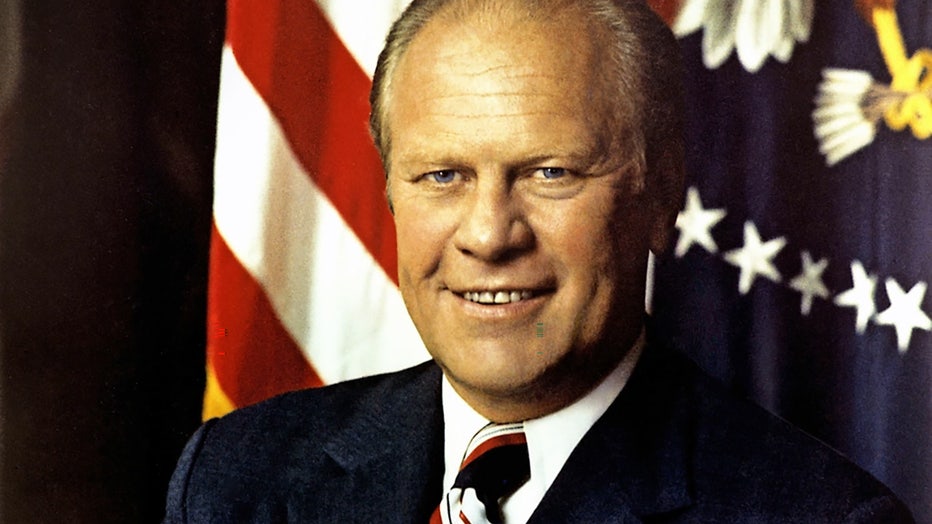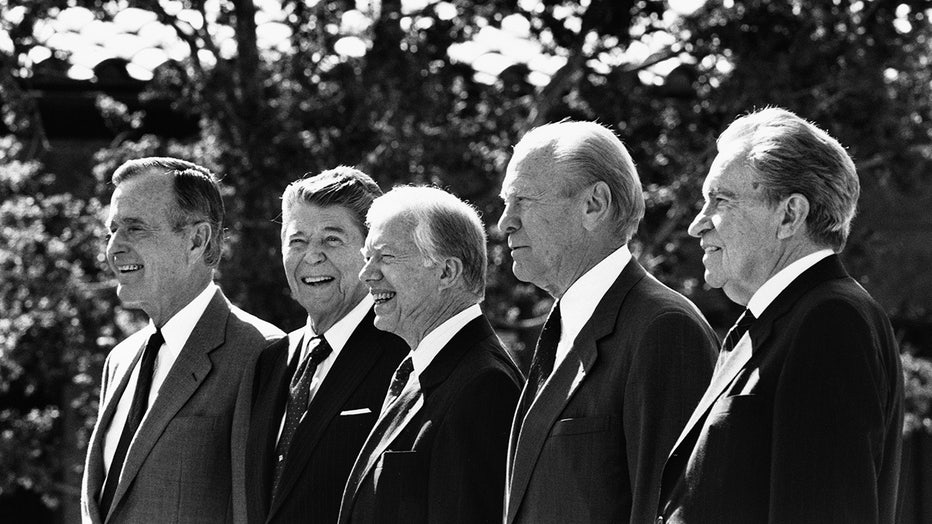50 years ago, this vice president became president – but was never elected at all

From 1988: What does it take to make a good vice president?
As the 1988 Democratic National Convention got underway, WAGA-TV's Richard Belcher took a look back at some of the more, and less, notable vice presidents through the years.
WASHINGTON - Fifty years ago, on August 9, 1974, President Richard Nixon officially ended his term as the 37th president of the United States. Minutes later, Vice President Gerald R. Ford was sworn in as the 38th president in the East Room of the White House.
"My fellow Americans, our long national nightmare is over," Ford told the nation in a speech. A few months later, he pardoned Nixon for any crimes he may have committed while in office, explaining that he wanted to end the national divisions created by the infamous Watergate affair.
Of the 49 vice presidents in U.S. history, nine of them have risen to the presidency due to death or resignation.
"For most vice presidents, succession is something that you have to think about and plan for, but it doesn’t happen," said Joel Goldstein, a historian and expert on the vice presidency. "But when it happens, you’ve got to be ready."

President Gerald R. Ford, official portrait
Ford became the first president in history to become elected president through appointment rather than election, and he had replaced Spiro Agnew as vice president only eight months before.
Agnew was charged with income tax evasion and political corruption following the Watergate scandal, which had forced him to resign.
Ford’s appointment as vice president came amid impeachment proceedings against Nixon for his involvement in the infamous Watergate scandal.
What is the Watergate scandal?

From 1979: Nixon's legacy & political fallout
Five years after Richard Nixon's resignation, KTTV-TV's Tony Valdez looks back at the former president's historic decision and its effect on national politics. Originally aired August 9, 1979.
On June 17, 1972, five men were arrested for breaking into and illegally wiretapping the Democratic National Committee headquarters in the Washington, D.C., Watergate complex.
Later that year, reporters Carl Bernstein and Bob Woodward from The Washington Post discovered a conspiracy surrounding the incident, leading to the political scandal.
In July 1973, testimony before the Senate Watergate Committee revealed that all of Nixon’s White House conversations were taped. The Supreme Court ruled that Nixon would need to provide the tapes and documents subpoenaed by special Watergate prosecutor Archibald Cox.
Later that year, on Oct. 20, 1973, Cox refused to compromise on the tapes and Nixon ordered Attorney General Elliot Richardson to fire Cox. Richardson refused and resigned in protest.
Then, the acting Attorney General Robert Bork fired Cox. This became known as the "Saturday Night Massacre."
Why did Nixon resign?

Richard Nixon's full resignation speech
On August 8, 1974, President Richard Nixon spoke for 15 minutes as he announced that he would become the first president to resign the position.
On Aug. 5, 1974, The "smoking gun" tape became public, where Nixon could be heard approving a proposal from his chief of staff to press the FBI to drop its investigation of the Watergate break-in six days earlier.
Republicans who had intended to support Nixon in an impeachment trial abandoned him.
Just days later, on August 8, Nixon announced his resignation.
Ford never had an opportunity to serve a full term; he was defeated by Jimmy Carter in the 1976 election.
August 9 becomes known as National Veep Day

File: Five presidents at the Reagan Library opening. (L-R) President George HW Bush, former presidents Ronald Reagan, Jimmy Carter, Gerald Ford, and Richard Nixon in Simi Valley, California at the dedication of the Ronald Reagan Library, November 4,
National Veep Day on Aug. 9 recognizes the succession plan of the president of the United States.
The day also is a nod to the one president who was neither elected vice president nor president – Gerald Ford.
This story was reported from Los Angeles. The Associated Press contributed.

